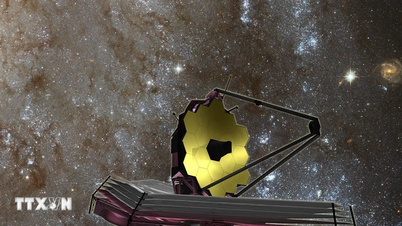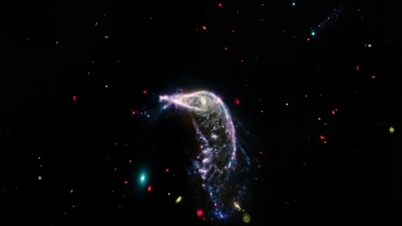Scientists have proposed a telescope design that is not the familiar round standard but rectangular, promising to be able to separate the faint light of the planet from the bright star it orbits.
This approach could open up the possibility of discovering dozens of near-Earth worlds with conditions suitable for life.
Currently, observing an Earth-like exoplanet is nearly impossible because the host star is always millions of times brighter. Meanwhile, the largest operational space telescope – James Webb Space Telescope (JWST) – has a mirror measuring only 6.5 m, far smaller than the minimum 20 m required to isolate a planet at a distance of 30 light years.
Other options, such as launching many small telescopes and linking them into clusters, or using "starshades," face technological challenges or huge fuel costs.
New research suggests that the problem could be solved with a 1 x 20 m rectangular mirror, operating at 10 micron infrared wavelengths – similar to JWST.
Thanks to its 20-meter length, the telescope has enough resolution to separate planetary light from the star along its long axis. By rotating its mirror, it can observe planets in any position around its host star.
Simulations show that in less than three years, the device could detect about half of the Earth-like planets orbiting Sun-like stars within 30 light-years.
Assuming each such star has an Earth-like planet, scientists could obtain data on about 30 potential planets. Further studies will focus on looking for signs of life in the atmosphere, such as oxygen produced by photosynthesis.
According to the research team, this design does not require too difficult technological breakthroughs, unlike many other current ideas. This could be a direct path for humanity to identify the Earth's "twin sisters"./.
Source: https://www.vietnamplus.vn/tham-vong-phat-hien-trai-dat-20-bang-kinh-thien-van-kieu-moi-post1059740.vnp




![[Photo] Binh Trieu 1 Bridge has been completed, raised by 1.1m, and will open to traffic at the end of November.](https://vphoto.vietnam.vn/thumb/1200x675/vietnam/resource/IMAGE/2025/10/2/a6549e2a3b5848a1ba76a1ded6141fae)

















































































![G-DRAGON 2025 WORLD TOUR [Übermensch]](https://vphoto.vietnam.vn/thumb/402x226/vietnam/resource/IMAGE/2025/10/3/0dec353013874c2ead28385a8c4ccf55)















Comment (0)